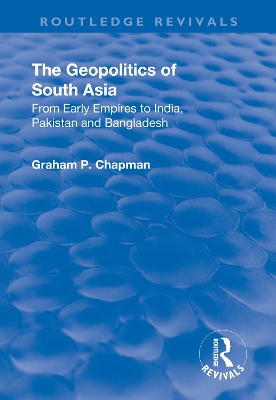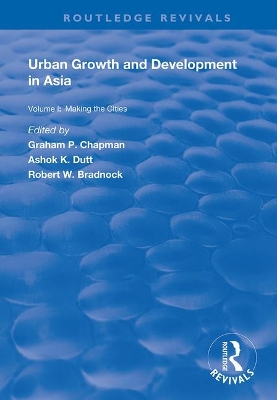Routledge Revivals
2 total works
The Geopolitics of South Asia: From Early Empires to India, Pakistan and Bangladesh
by Graham P. Chapman
This title was first published in 2000: This volume explores one of the world's greatest cultural heartlands - the Indian sub-continent. It shows how geological movements moulded the land and how they still impact upon it; how the culture of early setters evolved to form Hinduism; how its wealth and power attracted the attention of Islamic invaders who founded the Sultanate of Delhi and then the great Mogul Empire; and how they were later usurped by the British Raj. The story continues with the trauma of Partition and Independence in 1947, as India's unique form of Islam shook free from Nehru's secular India with the founding of Pakistan. At different points in the story, discussions are woven in on subjects such as caste or the management of water resources. Much of the book is written in terms of the three major forces of integration.These are "identitive" forces - bonds of language, ethnicity, religion or ideology; "utilitarian" forces - bonds of common material interests; and "coercion" - the institutional use or threat of physical violence. By studying these forces, Professor Chapman shows how the organization of territory - as states and empires, as monarchic realms and as representative democracies - has been central to the region's historic, cultural, linguistic and economic development. In doing so, he contends that the lynchpin of this region's story is a geopolitical one.
Urban Growth and Development in Asia
by Graham P. Chapman and Ashok K. Dutt
First published in 1999, this volume begins with a panoramic survey by Nigel Harris of the drama of Asian Urbanization, based on the inaugural plenary lecture he gave to the 5th Asian Urbanization Conference held in London. In the following chapters many experts and practitioners from different countries and cities provide a stimulating portrayal of the processes and outcomes of one of the greatest shifts of population (not just absolutely but proportionately as well) ever to have occurred in human history.
Asia includes more than half the world’s population, but, apart from the Tiger economies and Japan, it is still overwhelmingly rural. In the last decade or so urbanization has really begun to take off and the shift of population to the cities represents one of the greatest population movements the planet has ever seen. By 2030 more than 50% of Asia’s population will be urban and between now and then more than 500 million people in Asia will have moved - looking for jobs, housing, food and water. They will be both part of a problem and most of the solution - building around them the cities they will live in.

